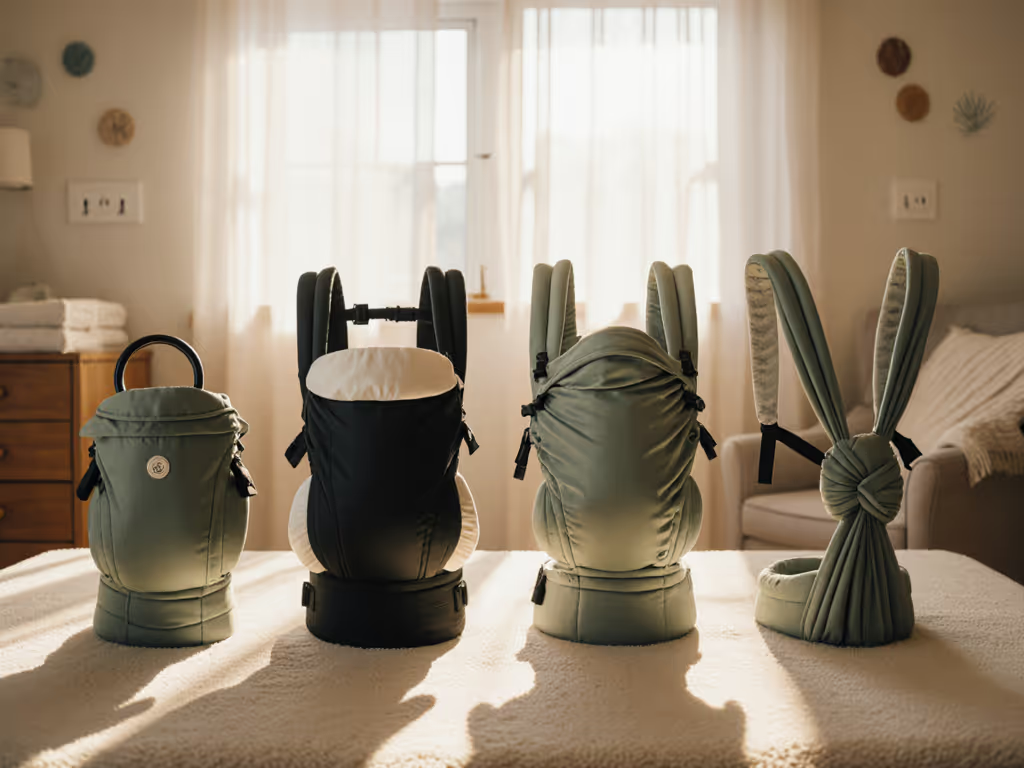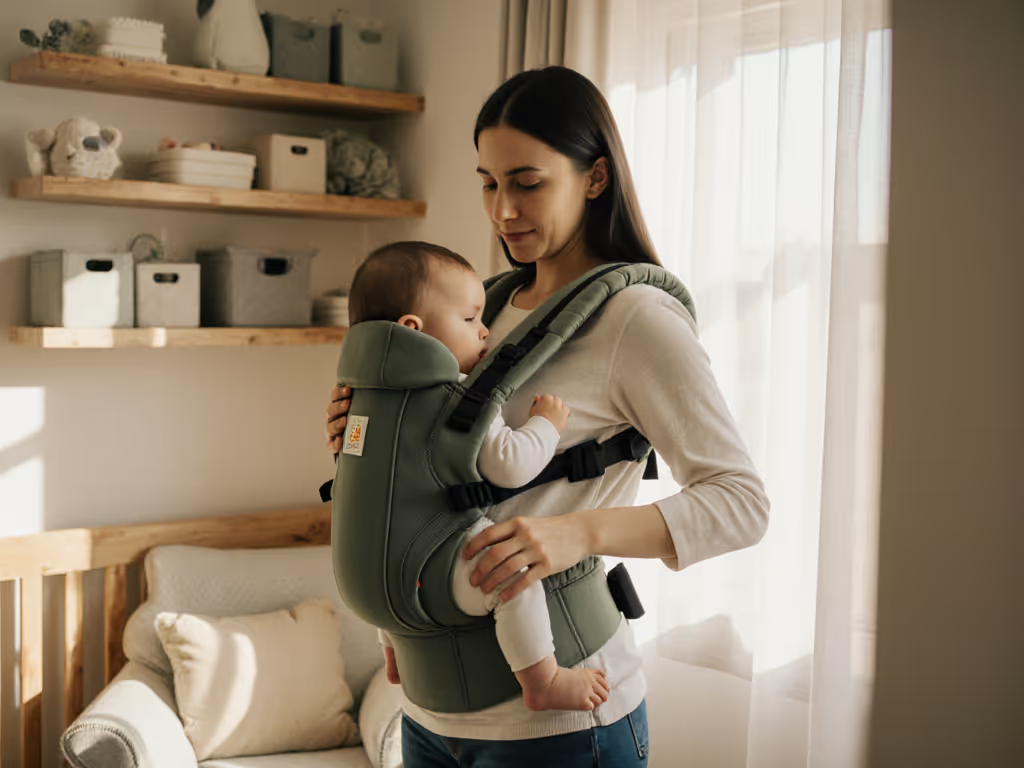
How to Prevent Babywearing Injuries Step by Step
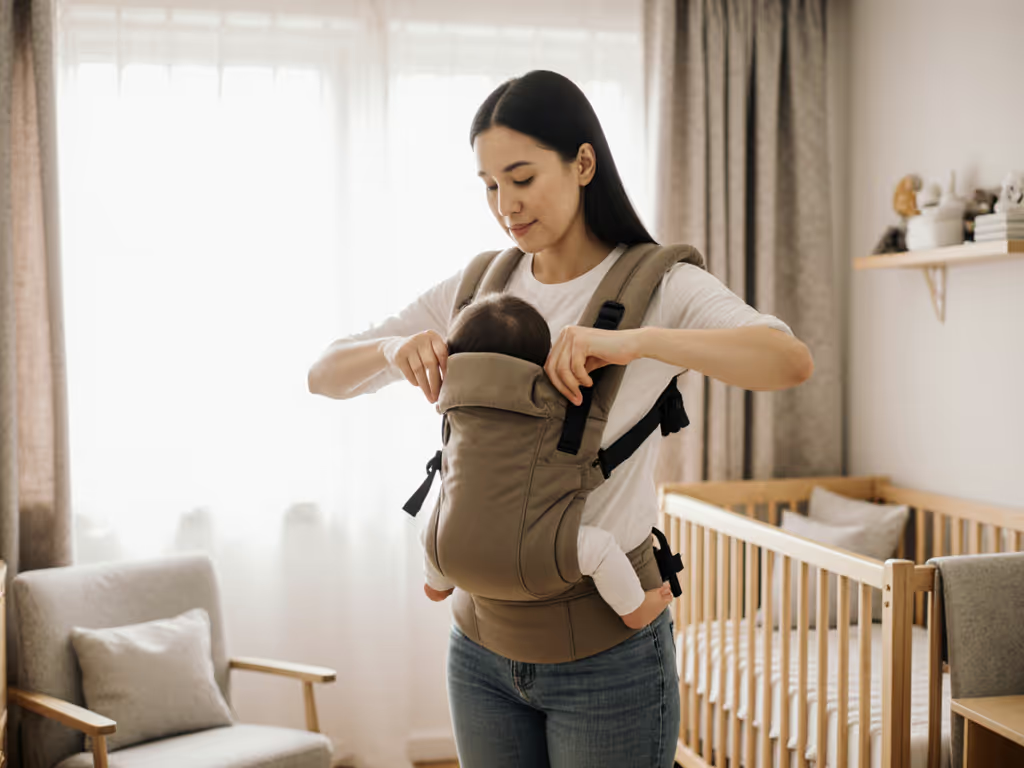
Over 90 percent of new parents admit feeling nervous about using a baby carrier for the first time. Choosing the right carrier and knowing how to use it safely affects your baby's comfort and development, as well as your own peace of mind. This guide walks you through easy, expert-backed steps for selecting, inspecting, and wearing your carrier, so you can enjoy close moments with your baby while staying confident in every move.
Quick Summary
| Key Point | Explanation |
|---|---|
| 1. Choose the right carrier style | Select a baby carrier that matches your lifestyle and your baby's developmental stage for optimal use and comfort. |
| 2. Inspect carrier regularly | Conduct thorough safety checks to ensure all components are intact and functional before each use. |
| 3. Position baby correctly | Ensure your baby is in a proper ergonomic position to support their hip development and secure breathing. |
| 4. Secure all fastenings tightly | Confirm that all buckles and straps are fastened snugly to enhance safety and prevent movement while carrying. |
| 5. Evaluate comfort before each use | Always check both your baby and the carrier for signs of discomfort and correct positioning to ensure a positive experience. |
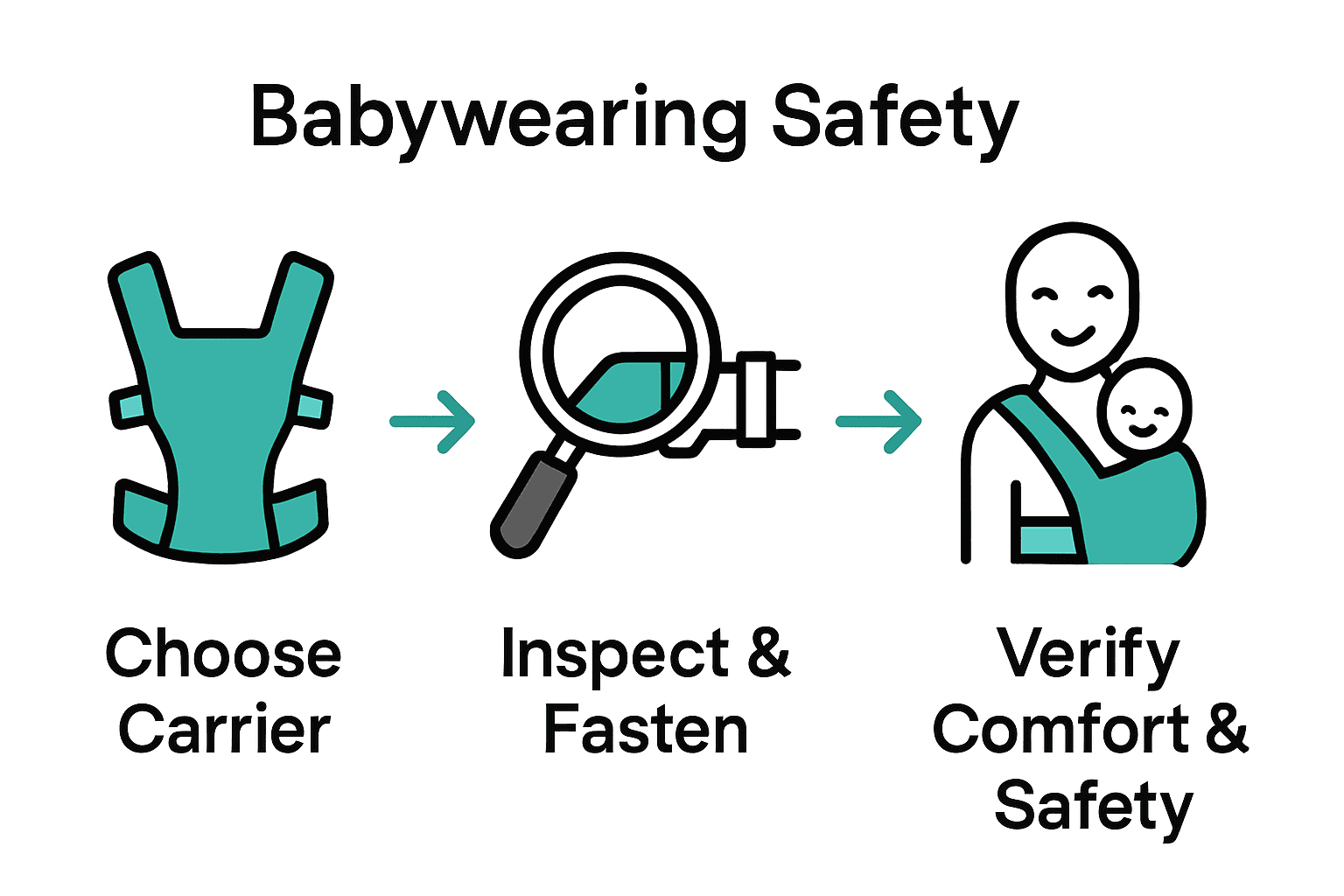 |
|
Step 1: Select the Right Baby Carrier for Your Needs
Picking the perfect baby carrier is more than just finding something cute it's about matching your lifestyle and your baby's developmental needs. When you start exploring carrier options, you'll want to think about how you plan to use it whether that means daily walks around the neighborhood or weekend hiking adventures.
Consider your primary goals and your baby's current stage. According to the Baby Safety Foundation, different carriers suit different purposes. Soft wraps and slings work wonderfully for newborns and young infants who need close body contact and gentle support. As your baby grows and becomes more active around 6 months you might transition to structured carriers that provide more stability and allow facing outward or back carrying.
Your carrier selection should prioritize three key factors safety comfort and versatility. Look for carriers that meet national safety standards have adjustable straps and distribute your baby's weight evenly across your body. Pro tip check the weight range and recommended age guidelines carefully. Some carriers are designed for specific developmental stages so what works for a 2 month old will not necessarily work for a 1 year old.
Ready to find your perfect match? In the next step we will dive into understanding different carrier styles and how they align with your specific needs.
Step 2: Inspect Carrier for Wear and Proper Assembly
Before you take your baby carrier out for a spin you need to do a thorough safety check. Think of this inspection like a pre flight checklist ensuring everything is secure and ready for your little passenger. The Baby Safety Foundation emphasizes that a quick but comprehensive examination can prevent potential accidents and keep your baby protected.
Start by spreading out the carrier in good lighting and carefully examine every single component. Look closely at the fabric for any signs of fraying thinning or small tears that could compromise structural integrity. Pay special attention to high stress areas like shoulder straps connector points and seams. Check all buckles clasps and fasteners making sure they click securely and do not show signs of cracking or weakening. According to safety guidelines from Best Start resources you want to confirm that the fabric can securely hug your baby without any slack that might cause uncomfortable positioning.
Warning signs that mean you should replace your carrier immediately include visible fabric damage loose stitching compromised buckle mechanisms or straps that do not hold their original tension. Always trust your instincts if something feels off or looks worn.
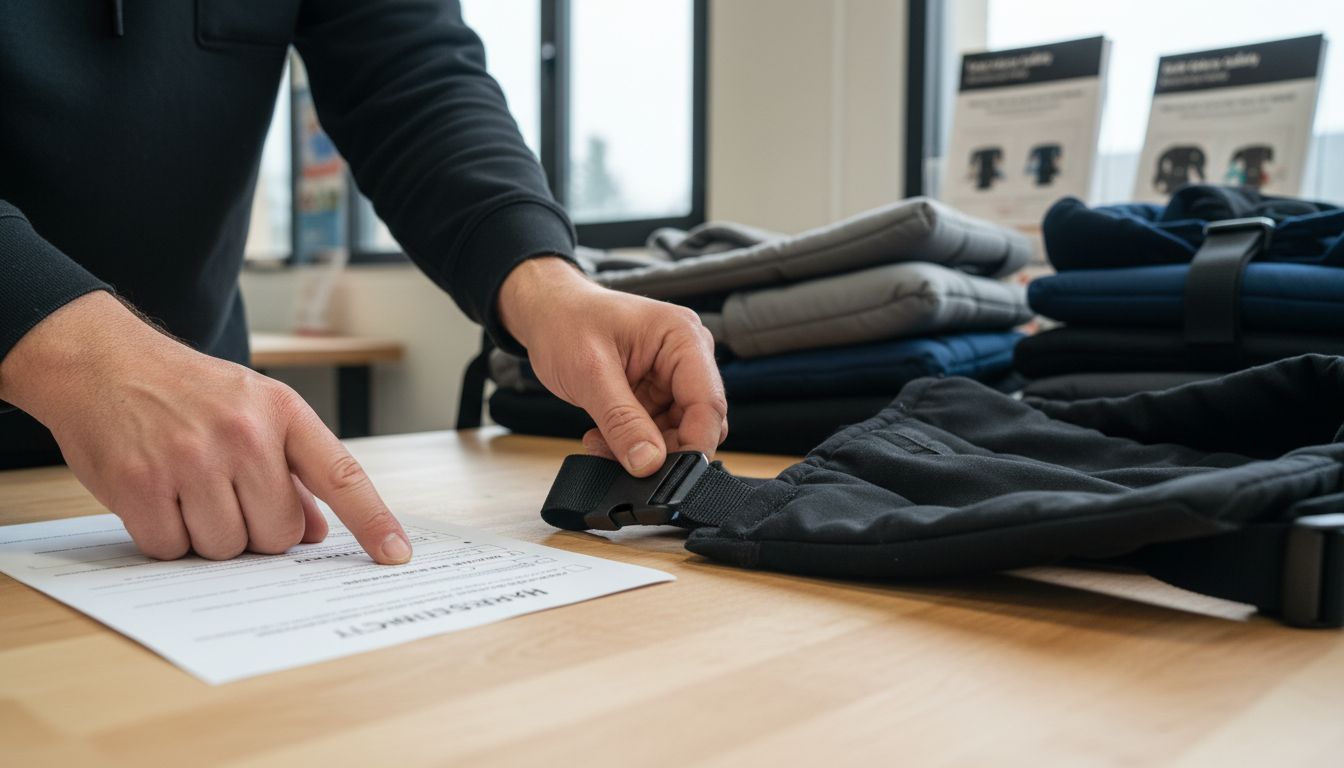 A professional grade carrier is an investment in your baby's safety and your peace of mind. Keep a spare carrier on hand if possible so you always have a reliable backup.
A professional grade carrier is an investment in your baby's safety and your peace of mind. Keep a spare carrier on hand if possible so you always have a reliable backup.
Ready to move forward? In the next step we will explore how to properly position your baby for maximum comfort and security.
Step 3: Position Baby for Optimal Hip and Neck Support
Positioning your baby correctly in a carrier is about more than comfort it is a critical safety practice that supports healthy physical development. The Baby Safety Foundation highlights that proper positioning can prevent potential musculoskeletal issues and ensure your little one stays safe and secure during babywearing.
The ideal positioning follows a specific ergonomic approach. According to best practices your baby should be in a natural frog leg or spread squat position with knees elevated higher than their bottom. This positioning supports natural hip development and mimics the way babies naturally sit when held. Ensure your baby is positioned close to your body with their tummy pressed against you creating a secure embrace that prevents any potential slumping or compromised breathing. Best Start resources emphasize keeping the baby's chin off their chest to maintain an open airway a critical safety checkpoint that prevents respiratory challenges.
Be mindful of subtle signals from your baby. If they seem uncomfortable squirmy or their head is not well supported adjust the carrier immediately. A good rule of thumb is to be able to see your baby's face and ensure they can breathe easily without restriction.
Keep checking periodically especially during the first few times you use the carrier. Trust your parental instincts if something does not feel quite right.
Ready to learn about maintaining proper support during movement? In the next step we will explore techniques for walking and moving safely while babywearing.
Step 4: Ensure Secure Fastening and Weight Distribution
Securing your baby carrier is like preparing for a critical mission where precision matters more than anything else. The Baby Safety Foundation emphasizes that every single buckle snap and strap plays a crucial role in keeping your little one safe and comfortable during your babywearing journey.
Start by checking each fastening mechanism systematically. Pull gently on straps to confirm they are locked tight and will not slip. According to Best Start resources the carrier should feel snug against your body creating a secure embrace that prevents any potential movement or slipping. Pay special attention to weight distribution ensuring that the carrier supports your baby evenly across your core and back. This approach reduces strain on specific muscle groups and prevents potential discomfort during extended wear. Adjust shoulder straps and waist belts so the weight feels balanced and natural almost like your baby is an extension of your own body.
A pro tip many parents overlook is practicing your fastening routine before actually wearing your baby. Do a few dry runs in front of a mirror to build muscle memory and confidence. Watch for any signs of uneven pressure points or areas that feel uncomfortable. If something feels off adjust immediately. Your comfort directly impacts your baby stability and your overall babywearing experience. Remember that a well fastened carrier is not just about security its about creating a smooth seamless connection between you and your little one.
Ready to take your babywearing skills to the next level? In the next step we will explore movement techniques that keep both you and your baby comfortable and safe.
Step 5: Verify Comfort and Safety Before Every Use
Treating each babywearing session like a safety mission can save you from potential risks and ensure your little one stays protected. The Baby Safety Foundation recommends a thorough pre use checklist that transforms safety verification into a quick yet comprehensive routine you can master in minutes.
Start with a visual and physical inspection of both your baby and the carrier. According to Best Start resources your baby should always be in clear view with their face completely visible and positioned close enough that you could easily kiss their forehead. Check that all straps are correctly fastened no fabric is twisted and the carrier maintains its original structural integrity. Pay attention to your babys body language subtle signs of discomfort like squirming excessive fussing or changes in breathing can indicate improper positioning or potential safety issues. Ensure the carrier supports your babys natural spine curve keeping their airways open and preventing any potential breathing challenges.
A game changing pro tip is to develop a quick mental checklist you can run through every single time you prepare to wear your baby. Create a simple memorable acronym like SAFE Support Airways Fastenings Evaluate that helps you remember the critical checkpoints. Trust your parental instincts if anything feels off or uncomfortable take a moment to readjust. Remember that babywearing is about creating a secure comfortable connection between you and your little one where both of you feel confident and relaxed.
Ready to put all these safety techniques into practice? In the next step we will explore how to move confidently and comfortably while keeping your baby secure.
Keep Your Baby Safe and Comfortable with Expert Babywearing Support
Preventing babywearing injuries requires careful attention to safety, proper positioning, and choosing the right carrier as outlined in the article "How to Prevent Babywearing Injuries Step by Step." New parents and caregivers often face challenges such as finding a carrier that supports hip and neck development, ensuring secure fastenings, and maintaining comfort during every use. These concerns are real and can feel overwhelming when your baby’s safety is on the line.
At Caregiver Carry, you will find trusted, evidence-based resources designed to guide you through these exact challenges with clear instructions and safety checklists. Whether you need help selecting a carrier that fits your body type or want detailed reviews to compare your options, our platform empowers you to make confident choices. Don’t wait until a minor issue turns into a risk; discover how to protect your little one by exploring our step-by-step safety guides and expert tips right now. Start your journey to safer, more comfortable babywearing at Caregiver Carry and give your baby the secure support they deserve.
Ready to ensure every babywearing moment is worry-free? Visit Caregiver Carry today and take the next step toward perfect positioning and secure carrying techniques.
Frequently Asked Questions
How can I select the right baby carrier to prevent injuries?
Choosing the right baby carrier involves considering your lifestyle and your baby's developmental stage. Focus on safety, comfort, and versatility. Aim for a carrier with adjustable straps that evenly distributes weight within recommended age guidelines to prevent strain.
What should I inspect on my baby carrier to ensure safety?
Before use, conduct a thorough inspection of your baby carrier. Check for fraying fabric, secure buckles, and proper assembly to ensure it can securely support your baby. Perform this inspection every time you prepare to use the carrier to prevent accidents.
How do I position my baby correctly in a carrier?
Positioning your baby in a natural frog leg position is crucial for their safety and comfort. Ensure their knees are elevated higher than their bottom and their tummy is pressed against you to support healthy development. Adjust as needed to keep an eye on their face and ensure they can breathe easily.
What fastening techniques can help prevent babywearing injuries?
Secure your carrier by systematically checking each fastening mechanism before each use. Make sure all straps and buckles are locked tightly to create a snug fit that distributes weight evenly across your core. Practice your fastening routine to build confidence and reduce the risk of errors.
How can I verify my baby's comfort and safety before using the carrier?
Perform a visual and physical check of both your baby and the carrier each time before use. Ensure their face is visible, check that straps are fastened correctly, and look for signs of discomfort like squirming. Quickly develop a mental checklist to streamline this routine for every wear.
What steps can I take during movements to ensure safety while babywearing?
When moving with your baby in a carrier, maintain good posture and take deliberate steps to prevent strain on yourself and discomfort for your baby. Keep your center of gravity low and avoid sudden movements. Regularly adjust the carrier's position to ensure it remains secure and comfortable for both you and your baby.


